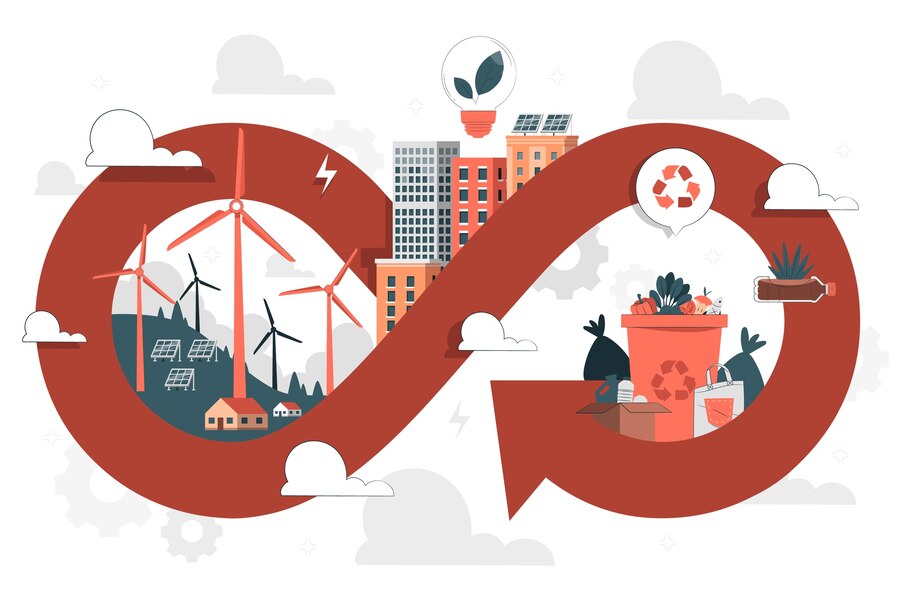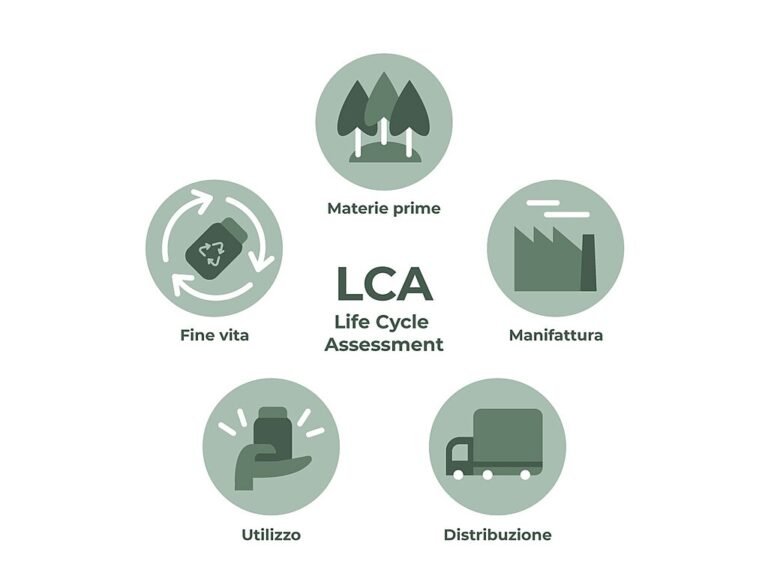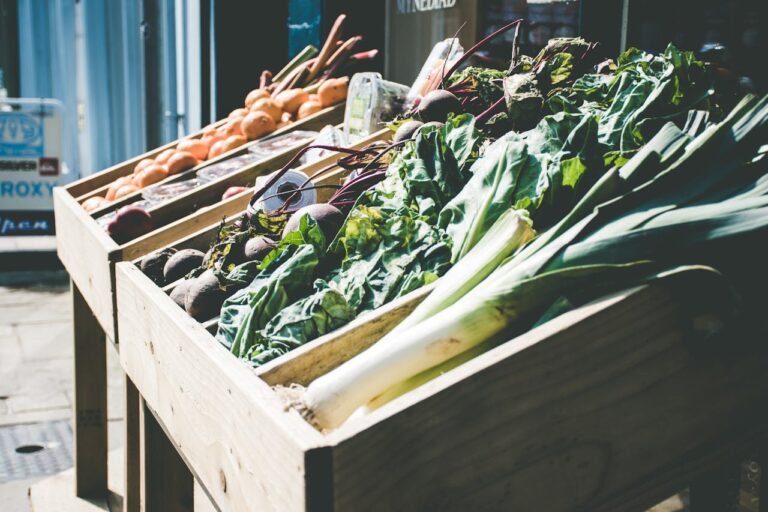Think about how much waste we generate every single day—plastic wrappers, old clothes, broken electronics. Now imagine if none of it went to waste. Instead, everything we use could either be safely returned to nature or endlessly repurposed into something new. This is the heart of Cradle to Cradle (C2C)—a powerful approach to sustainability that transforms the way we design, produce, and use products.
Unlike the traditional Cradle to Grave mindset—where products are made, used, and discarded—Cradle to Cradle ensures that everything has a next life. This means materials are carefully selected to be either biodegradable (like compostable food packaging) or endlessly recyclable (like high-quality aluminium or glass). It’s about designing products that work with nature, not against it.
In this guide, we’ll break down what Cradle to Cradle really means, share real-life examples of businesses leading the way, and offer practical steps you can take—whether you’re an entrepreneur, designer, or simply someone who cares about the planet. Sustainability isn’t just about reducing harm; it’s about creating a world where waste is a thing of the past. Let’s explore how to make that happen.

What is Cradle to Cradle?
Cradle to Cradle (C2C) is a design philosophy created by architect William McDonough and chemist Michael Braungart in the early 2000s. The idea is simple: instead of making products that end up as waste, we should design things that can be used again and again.
Most products today follow a Cradle to Grave system—they’re made, used, and then thrown away, usually ending up in landfills. C2C takes a different approach. It ensures that everything we produce either:
- Returns to nature (Biological Cycle) – Think of a shirt made from organic cotton that can decompose safely in the soil.
- Gets reused endlessly (Technical Cycle) – Like an aluminium can that gets recycled into a new can without losing quality.
Instead of just reducing waste, C2C focuses on creating products that benefit the planet from the start. It’s about designing with purpose, ensuring materials stay in use rather than becoming pollution. As McDonough puts it, “Being less bad is not being good. We need to design for a positive impact from the start.”
The Science Behind C2C: Research & Statistics
Several studies highlight the economic and environmental benefits of the cradle-to-cradle approach. The Ellen MacArthur Foundation found that shifting to circular models could generate $4.5 trillion in economic benefits by 2030. That’s money saved, jobs created, and resources preserved.
Another study found that 80% of a product’s environmental impact is locked in during the design phase. This means that by making better choices upfront—choosing reusable materials, eliminating toxins, and planning for end-of-life recycling—we can significantly cut waste and emissions.
Here’s how the Cradle to Cradle model stacks up against traditional production:
| Aspect | Traditional Model | Cradle-to-Cradle Model |
|---|---|---|
| Waste Generation | Linear, waste-heavy | Circular, waste-free |
| Material Reuse | Limited, downcycled | Infinite reuse, upcycling |
| Environmental Impact | High carbon footprint | Reduced emissions & toxins |
| Economic Value | Short-term profit focus | Long-term financial gains |
Personal Story: Yotam Solomon’s Journey From Fashion to Cradle-to-Cradle Sustainability
Let me share the inspiring journey of Yotam Solomon, a fashion designer who transformed his approach to sustainability through the Cradle to Cradle philosophy. Born in Haifa, Israel, Yotam moved to Los Angeles as a teenager, initially pursuing a career as a classically trained violist. However, his passion for design led him to establish his own fashion label in 2007, focusing on environmentally friendly production and natural materials.
In 2010, the devastating BP oil spill in the Gulf of Mexico profoundly impacted Yotam. Motivated to make a difference, he designed the “Oil Spill” collection to raise awareness and funds for the cleanup effort. This experience deepened his commitment to sustainability, leading him to explore innovative, eco-friendly materials.
Yotam’s dedication to sustainable fashion culminated in the founding of REVOterial, a company focused on developing cradle-to-cradle materials and products for the fashion industry. Through this venture, he aimed to create renewable materials that could be perpetually cycled, reducing waste and environmental impact.
Reflecting on his journey, Yotam emphasizes the importance of sustainable practices in fashion: “For me, it’s really about making cradle-to-cradle solutions, period. If it won’t make sense for us in 50 years, what’s the point of making it now?”
Yotam Solomon’s story exemplifies how embracing C2C principles can redefine a designer’s approach, merging creativity with sustainability to foster a more responsible fashion industry.
Learn More: 10 Effective Ways to Adopt a Zero-Waste Lifestyle
How Businesses Are Embracing C2C
Nike: Recycling Sneakers into Playgrounds
Nike, one of the world’s biggest sports brands, has taken a creative approach to sustainability. Through their Reuse-A-Shoe program, they collect worn-out sneakers and grind them down to create materials used for playground surfaces, running tracks, and even basketball courts. Instead of letting old shoes pile up in landfills, Nike turns them into something new and useful—making play areas safer and reducing waste at the same time.
Herman Miller: Designing for Disassembly
Office furniture company Herman Miller has reimagined the way office chairs are made. Their designs follow a 100% disassembly model, meaning every single part of the chair can be taken apart and either reused, recycled, or repurposed. This approach extends the life of materials and minimizes waste, showing that even everyday office furniture can be designed with a circular economy in mind.
Ford: Sustainable Car Interiors
Car manufacturing giant Ford has integrated C2C-certified materials into their vehicles, particularly in their interiors. By using recycled and non-toxic materials, Ford reduces plastic waste and ensures that cars are made with sustainable components that don’t harm the environment. This step is crucial in an industry known for high resource consumption and waste generation.
These businesses not only reduced their environmental footprint but also boosted brand loyalty and profitability.
C2C Certification: The Gold Standard
If you want to implement C2C, the Cradle to Cradle Certified® program is the benchmark for sustainable products. The certification evaluates materials based on five key areas:
This certification looks at five big questions:
- Material Health – Are the materials safe for people and the planet? No harmful chemicals are allowed.
- Material Reutilization – Can this product be reused or repurposed instead of turning into waste?
- Renewable Energy Use – Is clean energy being used in production, reducing the carbon footprint?
- Water Stewardship – Is water being used responsibly and not wasted or polluted?
- Social Fairness – Are workers treated fairly, and is the supply chain ethical?
Fun Fact: Over 600 brands worldwide have earned Cradle to Cradle certification, proving that sustainable innovation is possible. Ready to join them?
Challenges & Misconceptions
Despite its clear benefits, C2C isn’t always easy to implement. Businesses face real hurdles like high upfront costs, lack of awareness, and supply chain complications. For many, transitioning to a C2C model feels like an uphill battle—especially in industries built on traditional, waste-heavy systems.
One of the biggest concerns is cost. Using safe, reusable materials often requires more investment upfront than conventional alternatives. For example, a company producing plastic packaging may find it cheaper to use virgin plastic rather than developing a biodegradable or reusable alternative. But here’s the kicker—while the initial costs are higher, the long-term financial and environmental payoff is massive. Brands that commit to C2C often see lower production costs over time, improved brand loyalty, and regulatory advantages.
Another challenge is awareness. Many companies simply don’t know where to start. The transition to a circular model can feel overwhelming, but small steps add up. Switching to non-toxic dyes, sourcing recyclable materials, or designing products for easy disassembly are all doable starting points.
Debunking Common Myths
- “C2C is too expensive.” → While there’s an initial investment, the long-term financial benefits (lower waste costs, increased customer demand) far outweigh the costs.
- “Recycling is enough.” → Traditional recycling usually downgrades materials, making them less useful over time. C2C focuses on continuous upcycling and regeneration.
- “Only big companies can implement C2C.” → Even small businesses can start with changes like using compostable packaging or partnering with ethical suppliers.
Learn More: What Fabrics are Biodegradable?
Actionable Steps: How You Can Implement C2C
Whether you’re a business owner, designer, or everyday consumer, embracing Cradle to Cradle isn’t as complicated as it sounds. Here’s how you can start making a real impact:
For Businesses & Designers:
- Choose Circular Materials – Instead of using materials that will end up in a landfill, opt for ones that can be reused indefinitely. Look for Cradle to Cradle-certified fabrics, metals, or plastics. This means that when your product reaches the end of its life, its materials can be safely reintroduced into new products or naturally decompose without harming the environment.
- Design for Disassembly – Ever bought a product that’s impossible to fix, forcing you to replace it entirely? That’s the opposite of C2C. Aim to create products that can be taken apart easily, allowing components to be replaced, repaired, or repurposed instead of being thrown away. Think of modular furniture, shoes with replaceable soles, or phones with swappable batteries.
- Collaborate with Suppliers – Your supply chain matters. Partner with manufacturers and vendors who are also working towards circular production. This not only ensures ethical sourcing but also helps create a larger system where sustainable materials and processes become the standard.
- Use Renewable Energy – Every stage of production—from sourcing raw materials to final assembly—requires energy. By shifting to renewable sources like solar, wind, or hydroelectric power, businesses can significantly cut their carbon footprint while saving money in the long run.
For Consumers:
- Buy C2C-Certified Products – Your purchasing power drives demand. Support brands that design with circularity in mind, using non-toxic, reusable, or biodegradable materials. From clothing and furniture to electronics and packaging, look for products that have been certified Cradle to Cradle.
- Repair Instead of Replace – We’ve all been guilty of tossing a broken appliance or worn-out pair of jeans. But before you replace it, consider fixing it. Many brands now offer repair programs, and there are plenty of online tutorials to help you mend, patch, or reassemble items.
- Compost & Upcycle – Instead of throwing organic waste away, compost it to create nutrient-rich soil for your garden. Upcycling is another great option—turn old t-shirts into reusable shopping bags or transform glass jars into storage containers.
- Advocate for Policy Change – Governments play a huge role in shaping the future of sustainability. Support initiatives that encourage businesses to adopt circular practices. Whether it’s voting for eco-friendly policies, signing petitions, or simply spreading awareness, your voice matters.
Conclusion: The Future is Regenerative
Cradle to Cradle is more than just a sustainability strategy—it’s a mindset shift towards designing a waste-free, regenerative world. By adopting these principles, businesses can innovate smarter, and individuals can consume more consciously.
As McDonough famously said, “We can design a world that celebrates abundance, not scarcity.” The future of sustainability isn’t about doing less harm—it’s about actively creating a positive, lasting impact.
Are you ready to take the first step towards a Cradle to Cradle future?







